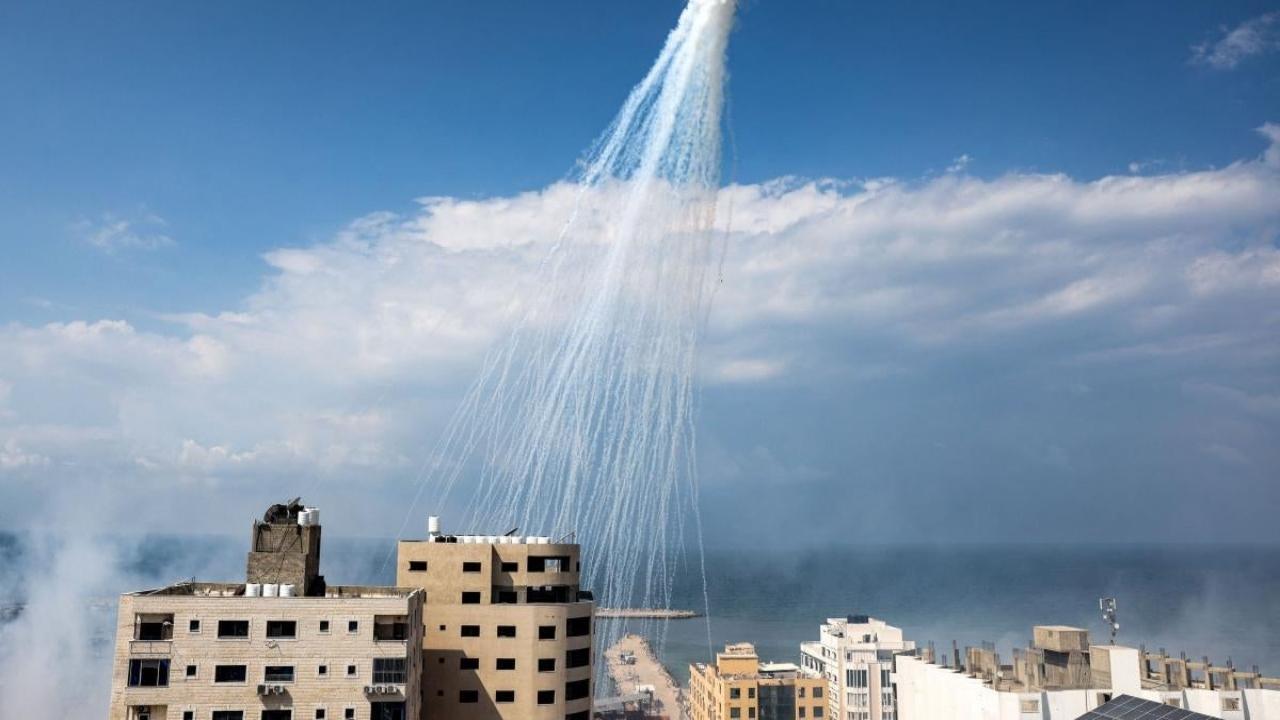Human Rights Watch has expressed serious concerns about Israel's use of white phosphorus in its military operations in Gaza and Lebanon, stating that it places civilians at risk of severe and long-term injuries

File Photo/HRW, X
Key Highlights
- Human Rights Watch said Israel used white phosphorus in Gaza and Lebanon
- Use of white phosphorus violates international humanitarian law
- Israeli authorities have not officially commented on whether they used white phosphorus
Human Rights Watch has expressed serious concerns about Israel's use of white phosphorus in its military operations in Gaza and Lebanon, stating that it places civilians at risk of severe and long-term injuries. The organization, in a statement published on its website, said that on October 11, verified videos showing multiple airbursts of artillery-fired white phosphorus over the Gaza City port and two rural locations along the Israel-Lebanon border, which took place on October 10 and 11, 2023. Additionally, interviews were conducted with witnesses who described an attack involving white phosphorus in Gaza.
ADVERTISEMENT
White phosphorus, a substance with both civilian and military uses, can be utilized for marking, signaling, and obscuring, but it can also serve as a weapon to start fires that can cause significant harm to people and structures. The use of white phosphorus in Gaza, one of the most densely populated areas globally, is a particular cause for concern as it increases the risk to civilians and violates international humanitarian law, which prohibits putting civilians at unnecessary risk.
Lama Fakih, the Middle East and North Africa director at Human Rights Watch, emphasized, in a statement, the severe consequences of using white phosphorus in populated urban areas, explaining that it can result in excruciating burns and lifelong suffering for individuals. When white phosphorus is airburst in densely populated areas, it can destroy houses and cause serious harm to civilians, making its use unlawful and indiscriminate.
Also read: Israeli military directs 1.1 million people in northern Gaza to leave in 24 hours
Human Rights Watch interviewed two individuals from the al-Mina area in Gaza City who witnessed strikes consistent with the use of white phosphorus. The witnesses described ongoing airstrikes followed by explosions in the sky and the descent of white lines, with the attack occurring sometime between 11:30 a.m. and 1 p.m. They also reported a stifling smell. Video footage of the incident confirmed the use of airburst 155mm white phosphorus artillery projectiles.
Two additional videos from October 10, near the Israel-Lebanon border, showed 155mm white phosphorus artillery projectiles being used, apparently for smokescreens, marking, or signaling.
White phosphorus ignites when exposed to oxygen and continues to burn until deprived of oxygen or exhausted. Its effects on human flesh can be devastating, causing burns down to the bone, exacerbating wounds, and potentially leading to multiple organ failure. Survivors may suffer from extensive scarring, physical disabilities, psychological trauma, and social exclusion.
The use of white phosphorus in densely populated areas of Gaza violates international humanitarian law, which requires all feasible precautions to avoid civilian injury and loss of life. The airburst technique used in these incidents spreads burning fragments over a wide area, exposing more civilians and civilian structures to potential harm than a localized ground burst.
Israeli authorities have not officially commented on whether they used white phosphorus during the recent fighting.
Human Rights Watch has documented Israel's use of white phosphorus in previous conflicts in Gaza, including in 2009. The organization calls for a complete ban on the use of "airburst" white phosphorus munitions in populated areas, with no exceptions. Non-lethal alternatives are readily available, including some produced by Israeli companies, which can be used as obscurants for military forces without causing harm to civilians.
In 2013, in response to a petition, the Israeli military indicated that it would no longer use white phosphorus in populated areas except in highly specific circumstances, which were not disclosed publicly. This approach has not been considered an official change in policy, and further examination and a permanent military directive were recommended.
Attacks using air-delivered incendiary weapons in civilian areas are prohibited under Protocol III of the Convention on Conventional Weapons. While the protocol contains some restrictions on ground-launched incendiary weapons, all types of incendiary weapons can cause devastating injuries. Human Rights Watch and many states have called for addressing these issues and closing the existing loopholes in Protocol III.
The recent use of white phosphorus in Gaza and Lebanon adds urgency to the calls from several countries to discuss the adequacy of Protocol III, with the next meeting of states scheduled for November at the United Nations in Geneva. It is worth noting that Palestine and Lebanon have joined Protocol III, while Israel has not ratified it.
Human Rights Watch has urged Israel to cease using white phosphorus in populated areas to prevent further harm to civilians, emphasizing that all parties to the conflict should prioritize protecting civilians from further suffering.
 Subscribe today by clicking the link and stay updated with the latest news!" Click here!
Subscribe today by clicking the link and stay updated with the latest news!" Click here!







